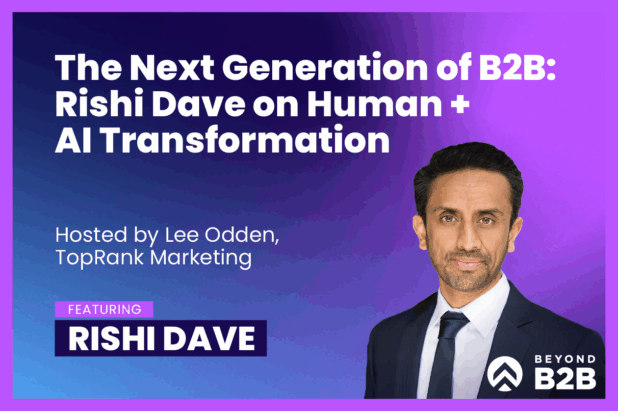 Next week I’ll get to experience two firsts: A visit to Hong Kong for the first time and speaking at an all new Search Engine Strategies conference for Asia. SES Hong Kong includes a great mix of expertise and leadership on all things search and social media. The opening keynote on day 1 features Avinash Kaushik, Author, Blogger, Analytics Evangelist at Google and day 2 will feature Tianfang Feng, Chief Consultant, Search Engine Marketing at Baidu.
Next week I’ll get to experience two firsts: A visit to Hong Kong for the first time and speaking at an all new Search Engine Strategies conference for Asia. SES Hong Kong includes a great mix of expertise and leadership on all things search and social media. The opening keynote on day 1 features Avinash Kaushik, Author, Blogger, Analytics Evangelist at Google and day 2 will feature Tianfang Feng, Chief Consultant, Search Engine Marketing at Baidu.
For my part, I’ll be participating on a panel, “The Business Value of Social Media” with: Scott McBride, Regional Business Director, 360 Digital Influence Asia Pacific, Ogilvy & Mather Asia Pacific and Eden Lau, Co-Founder & Managing Director of North Asia, Brandtology.
Our session is to discuss the answers to some pretty important social media questions that companies are asking world-wide: How do you listen to what is being said about your products or services? How do you unlock the economic potential of social media? How do you measure ROI?
While my copanelists will be focusing on social media insights for companies operating in the Asia Pacific region, I’ll be covering the answers for regional companies that want to engage the U.S. social media market.
As a new SES conference for Asia, this is an exciting opportunity for all, especially as our agency, TopRank Marketing engages more international consulting clients operating abroad in English speaking countries or that are looking for expertise to enter U.S. markets using social, SEO and content marketing.
Here’s a preview of my thoughts on the three main questions to be answered in the presentation:
How do you listen to what is being said about your products or services?
Knowing why you’re listening in the first place is essential before embarking on a social media monitoring program.
Understandably, many companies “don’t know what they don’t know” so it’s important to begin a structured and managed listening effort as soon as possible. Refinements can be made in keyword tracking and reports according to data that is collected and analyzed. IBM realized millions of dollars worth of sales leads from its listening efforts.
Free tools range from Google Alerts and socialmention.com to very low cost and useful such as Trackur. There are also premium monitoring tools for corporations that need more comprehensive monitoring such as that offered by Radian6 or Alterian SM2.
A social media monitoring strategy will provide pre-campaign social insights as well as ongoing reporting and analysis as social content is created and networks are developed.
How do you unlock the economic potential of social media?
There’s what you “could do” and what you “should do” when answering this question. Listening, research and participation should reveal the channels, media types and preferences for content and topics of most importance to your customers. Many companies rush into the social web with specific revenue growth goals in mind. Without understanding the community, many of those efforts fall flat.
In Hong Kong for example, comScore reports that 9 out of 10 netizens watch online video with 447 million videos watched during March 2010. Within the Hong Kong video marketplace, Google sites (mostly YouTube) has a little over 52% share followed by Tudou and Youku which are each at 3.6%. Facebook has just under 3%. That insight in concert with conversation and media tracking via social media monitoring may reveal that videos and video sharing/social networking sites are an ideal channel to engage your customers.
Unlocking the economic potential follows by leveraging video content to reach and engage customers, communicate the value of your products and services and stimulate discussion amongst the community you’re building. That’s exactly what PiperSport did with their video centric campaign that also involved Facebook and Twitter, resulting in the sale of several PiPerSport aircraft (which start at $140k each).
Another example is Minneapolis based Best Buy, and their “Twelpforce”, which is made up of 2,500 volunteer social-media savvy store associates that leverage Twitter to answer questions on topics ranging from how to hook up a new TV to making gift suggestions. The real-time nature of Twitter allows Best Buy to engage with many more customers in a short amount of time using a platform that costs them virtually nothing.
How do you measure ROI?
Let’s pick a measurement KPI, shall we? CPC, CPL, CTR, CPM, PPC, PPL, PPS, ROAS, ROI, UV, PV and the list goes on. For a great perspective on social media ROI, you must check out this now classic presentation from Olivier Blanchard.
My favorite response to the social media ROI question is another question: How do you measure the ROI of having a phone system in your office? Or an internet connection? These are communications platforms that are capable of achieving a number of goals according to how you use them. The same is true with the social web.
In a previous post, I shared a basic format for social media SEO strategy that any business could implement. You can’t measure anything if you’re not creating, sharing and engaging, so it’s important to get started with Listening > Content Creation > Promotion > Measurement.
In the course of implementing those 4 tactics, which are cyclical, there will be opportunities to influence and achieve business outcomes ranging from increasing word of mouth referrals, to unsolicited media coverage to an increase in web site visits and sales to attracting more candidates to hire or solving customer service issues more quickly.
Measuring ROI of any communications effort is in accordance with goals and the success of intended outcomes (like referrals, mentions or sales) as well as opportunistic outcomes that are revealed in the course of social web participation (Ex: promoting a discount or special offer for something a competitor is getting negative flack for on the social web).
I think the essential answer to the social media ROI question is to focus both on the performance of reaching intended outcomes as well as being agile enough to take advantage of opportunities that reveal themselves. Direct opportunities are possible, such as Dell Outlet generating millions in sales on Twitter or BlendTec boosting sales 5x through their now famous “Will it Blend” Videos on YouTube.
Companies that get hung up on treating social media and the social web as a direct marketing channel without community insight and participation will create a new key performance indicator acronym: ROF return on frustration.
In a little over 24 hours I have a very, very long flight ahead of me and Monday’s post will come from ORM expert, Andy Beal. I hope to liveblog some of the sessions from SES Hong Kong and get a few video interviews as well. If you have tips on visiting Hong Kong (I have 2 days open) please share in the coments.



